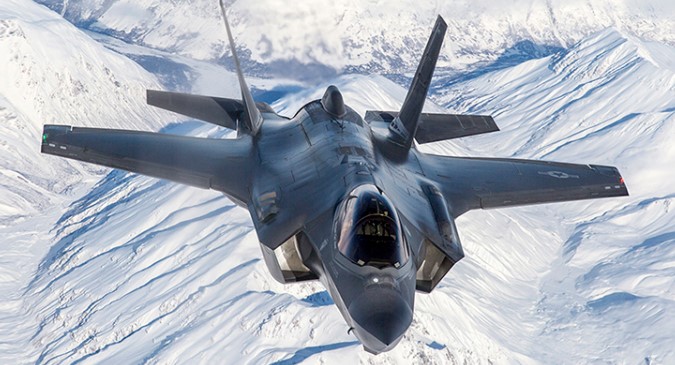HELENA Jaczek, federal Minister of Public Services and Procurement, Anita Anand, Minister of National Defence, and François-Philippe Champagne, federal Minister of Innovation, Science and Industry, on Monday announced that following an open, fair and transparent competition, Canada has finalized an agreement with the United States government and Lockheed Martin with Pratt and Whitney for the acquisition of F-35 fighter jets for the Royal Canadian Air Force (RCAF).
As outlined in Strong, Secure, Engaged, Canada has committed to purchase a new fleet of 88 advanced fighter jets for the RCAF, and the federal government has now announced that this new fleet will be comprised of F-35 jets. The first deliveries of these aircraft are anticipated to begin in 2026, and the government anticipates that Canada will reach Full Operational Capability with its entire fleet between 2032 and 2034.
This is the largest investment in the RCAF in the past 30 years. The estimated investment for this project is $19 billion, which includes associated equipment, sustainment set-up and services, as well as the construction of Fighter Squadron Facilities in Bagotville and Cold Lake.
The government said that as the rules-based international order is challenged around the world, the F-35 will be essential for protecting Canadians, enhancing Arctic security and national sovereignty, and enabling Canada to meet its NATO, NORAD and other obligations well into the future.
The government said it is confident that the F-35 represents the best fighter jet for the country at the best price for Canadians. During the finalization phase of the procurement process, the US government and Lockheed Martin with Pratt and Whitney successfully demonstrated that an agreement to purchase the F-35 fighter jets meets Canada’s requirements and outcomes, including value for money, flexibility, protection against risks, performance and delivery assurances.
The government said that this announcement is also excellent news for Canadian businesses and workers in the Canadian aerospace and defence sector. The acquisition and initial sustainment of the F-35 project has the potential to contribute over $425 million annually to Canada’s gross domestic product and close to 3,300 jobs annually for Canadian industry and value chain partners over a 25-year period (direct and indirect).
In addition, there will be substantial investments made in National Defence infrastructure renewal at various bases across Canada that will include many Canadian construction and site maintenance companies. Canadian industry will also have significant sustainment opportunities related to the Canadian fleet. Opportunities are expected in areas such as airframe and engine depots, as well as in training and in maintenance of components over the life of the fleet.
This important agreement will deliver the most modern and advanced equipment, and ensure the protection of Canada in the years to come, the government said.
Quick Facts:
- The Government of Canada launched an open and transparent competitive process to acquire new fighter jets in 2017.
- Officials conducted extensive engagement with suppliers, including Canadian aerospace and defence industries, to ensure that they were well positioned to participate in the procurement.
- A formal request for proposals was released to eligible suppliers in July 2019. It closed in July 2020.
- An independent fairness monitor oversaw the entire process to ensure a level playing field for all suppliers.
- Since 1997, the Government of Canada has been investing in the Joint Strike Fighter Program, which has provided Canadian industry with the opportunity to become a part of the F-35 fighter jets supply chain.
- Canadian industry has already been successful in obtaining significant work related to the F-35, obtaining $2.8 billion (USD) in contracts to date. Through the signing of the new Economic Benefits Arrangements with the US government and Lockheed Martin with Pratt & Whitney, Canadian industry is well positioned for continued opportunities related to both the production and sustainment of the aircraft.
- The Joint Strike Fighter Program is the largest fighter aircraft program internationally. Canada is 1 of 8 original countries in the program, along with the US, the United Kingdom, Italy, the Netherlands, Norway, Denmark and Australia.
- The acquisition of Canada’s new fleet of F-35 fighter jets will occur as a staggered process. Acquisition plans for a number of aircraft are already confirmed, and this process will continue until the full fleet of 88 jets is acquired.










